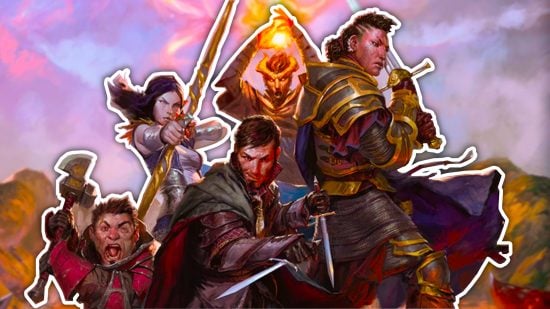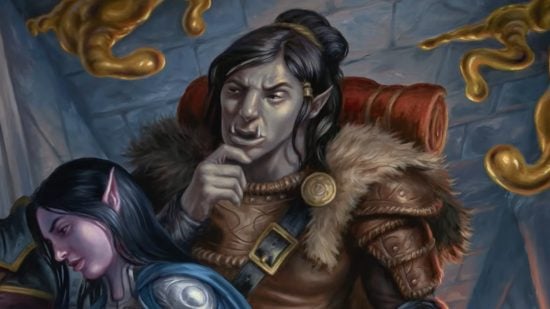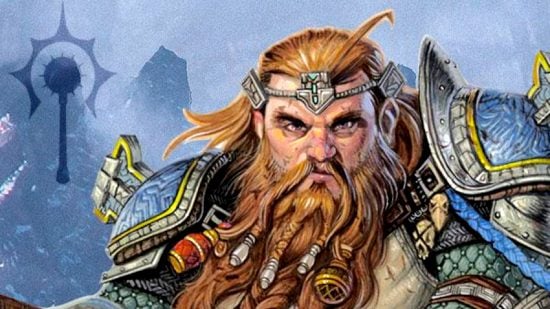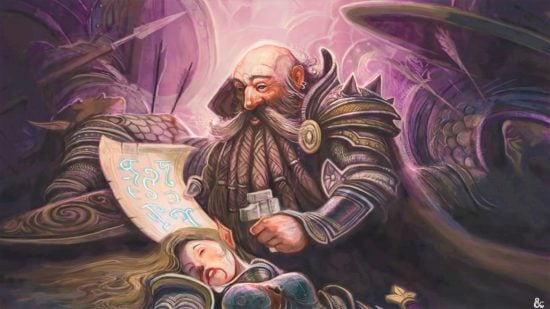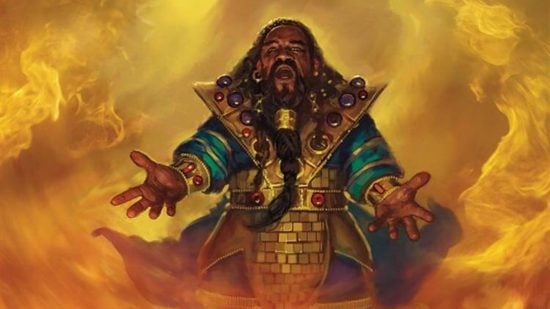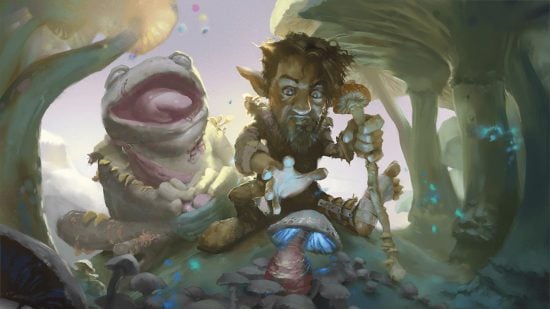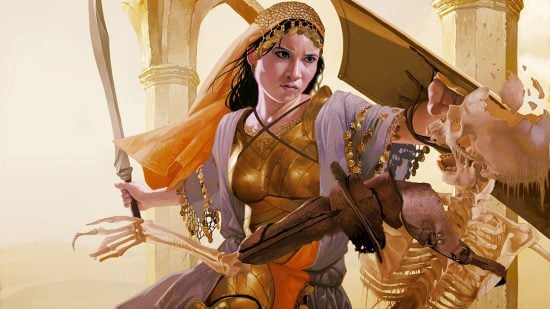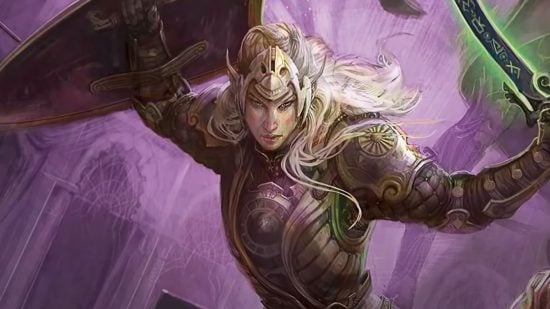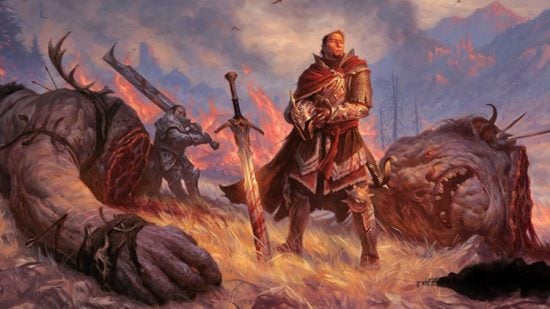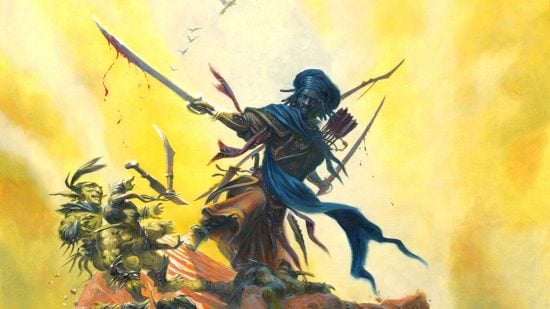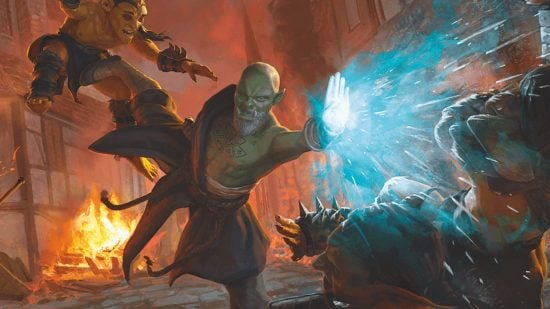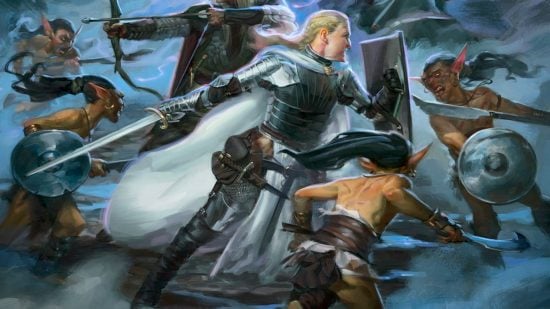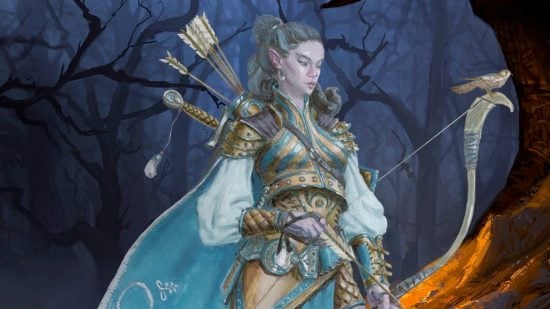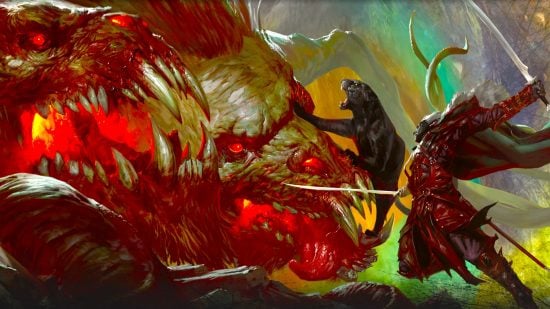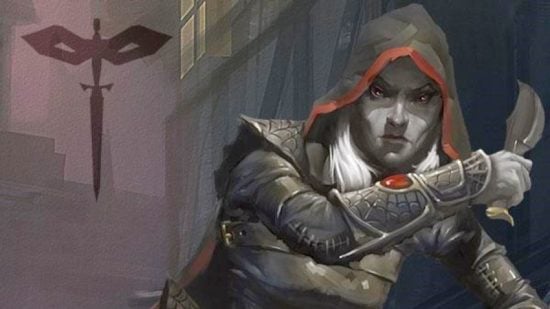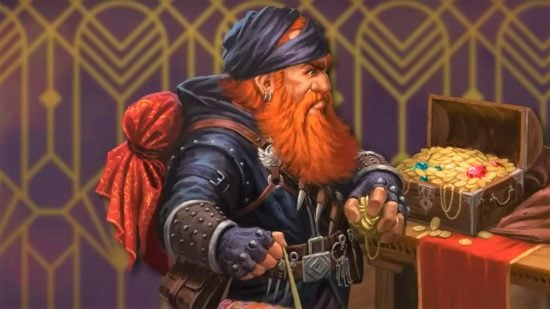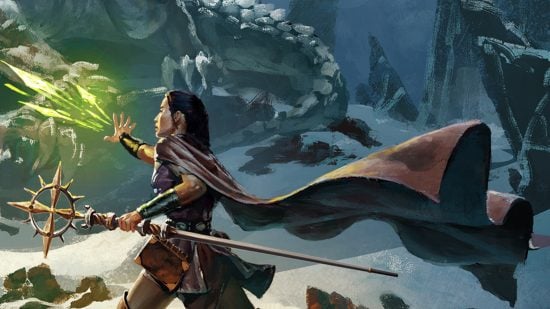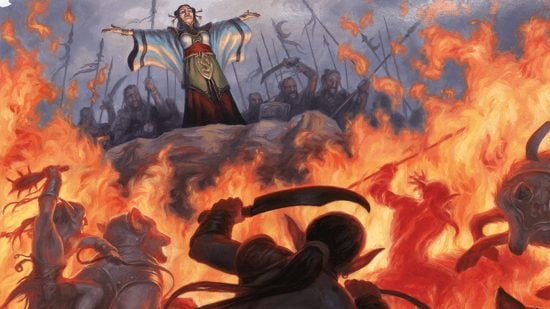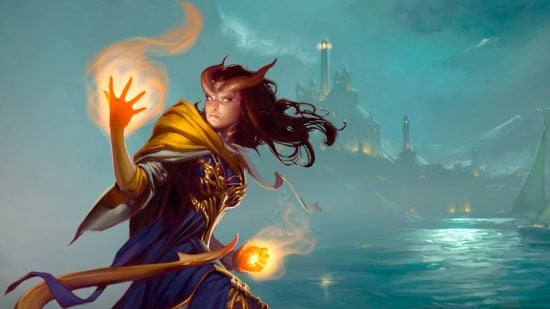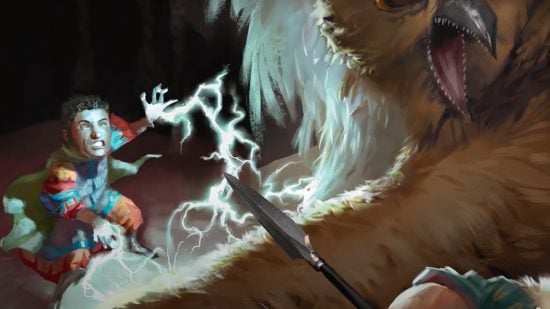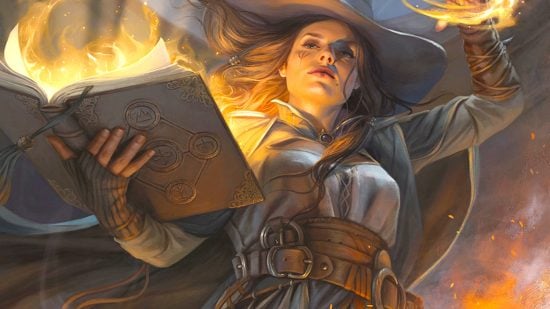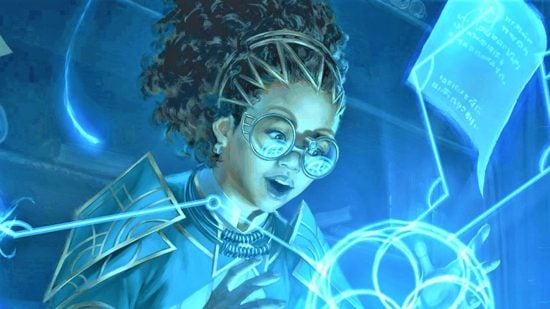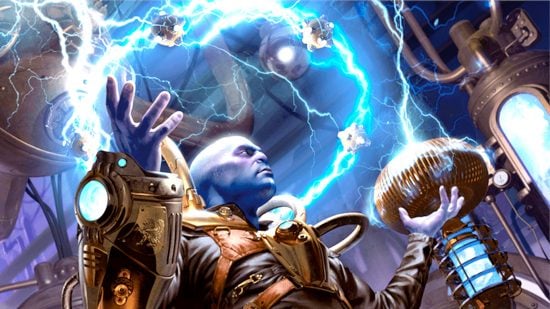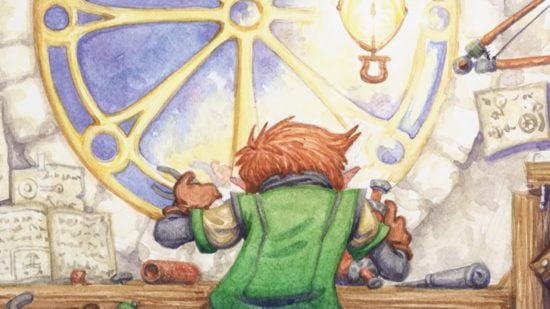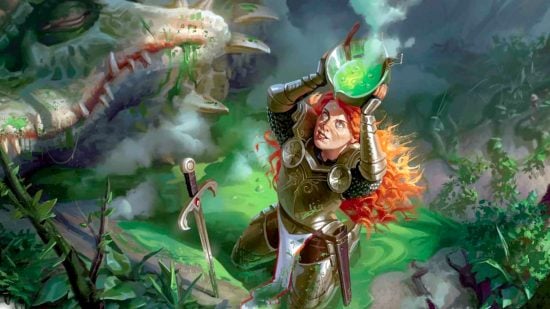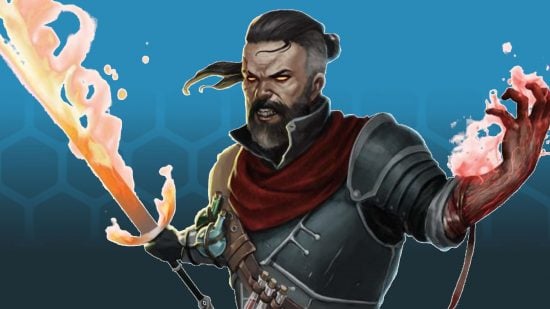In Dungeons and Dragons, choosing one of the 14 DnD classes might be the most important decision you can make. D&D classes shape the way you play, allowing you to wield axes, cast spells, or even communicate with animals. Each class is its own unique experience – so choosing the right one for you is crucial.
If you’re looking to roll up a Dungeons and Dragons character for your first (or ninety-first) adventure, this player’s guide gives a full intro to each of the DnD 5e classes, as well as our expert opinion on their individual strengths and weaknesses. We can even point you to plenty of other, class-specific guides that provide deep dives on how each of the DnD character classes plays.
Once you’ve chosen one of the DnD 5e classes, we’ve other simple guides to help get your 5e character game-ready. You’ll need to choose which of the DnD races and DnD backgrounds they have, then fill in their DnD character sheet. We recommend using a free DnD character creator tool to make this a lot quicker and easier.
For now, though, let’s review the 14 classes (13 official, and one unofficial) currently on offer in fifth edition Dungeons and Dragons.
These are the 14 DnD 5e classes:
- Barbarian 5e
- Bard 5e
- Cleric 5e
- Druid 5e
- Fighter 5e
- Monk 5e
- Paladin 5e
- Ranger 5e
- Rogue 5e
- Sorcerer 5e
- Warlock 5e
- Wizard 5e
- Artificer 5e
- Blood Hunter 5e

How to choose between DnD classes
DnD classes are the core of your character, both in terms of mechanics and roleplay. They represent the source of your character’s defining powers and abilities. Each class defines what makes you an adventurer – whether that be a particular profession, faith, heritage, or lifestyle choice.
Each has its own playstyles, with different strengths and weaknesses. Every class also comes with a host of subclasses that offer new and varied ways to play.
A D&D class is about more than what spells you can cast and which dice you roll, though. It’s the starting point for your backstory, beliefs, and goals – all of which are important to establish before a campaign begins. So when you choose, be sure to choose wisely.
We’re here to help you find the class that fits you best, so let’s talk a little more about how to make that choice.
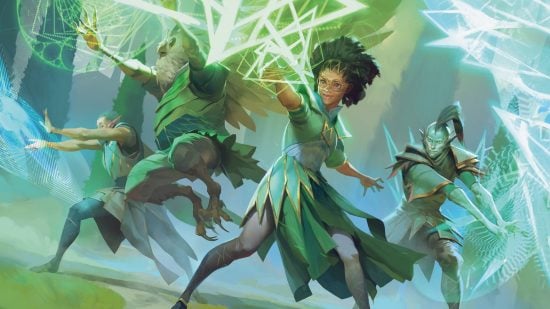
DnD class stats and roles
A big question to ask yourself when looking at classes is what kind of role you want to take in the adventuring party. Do you want to be the armored support, like a Cleric? Or maybe the flashy damage dealer as a Sorcerer? Your character’s core DnD stats should guide you here; there are six primary abilities in D&D:
- Strength
- Constitution
- Wisdom
- Charisma
- Intelligence
- Dexterity
Each class will specialize in a primary ability that governs character-building and roleplaying options. For example, a Barbarian will focus on brute Strength, while a Bard uses Charisma to charm their way out of sticky situations. When picking a class, look at their primary abilities and consider what sort of character you would want to roleplay.
If you’re already part of a gaming group, it can help to consider what your friends like to roleplay, too. The most effective adventuring parties tend to feature a range of classes. This makes you a more powerful team in general, but it also gives everyone a unique role – meaning everyone gets to have a hero moment without treading on anyone else’s toes.
This isn’t always the case, of course. An all-Bard party can be hilariously fun, and many classes come with subclasses that fill drastically different roles. But it’s worth bearing in mind the needs of the many when you’re shopping for a new D&D class.
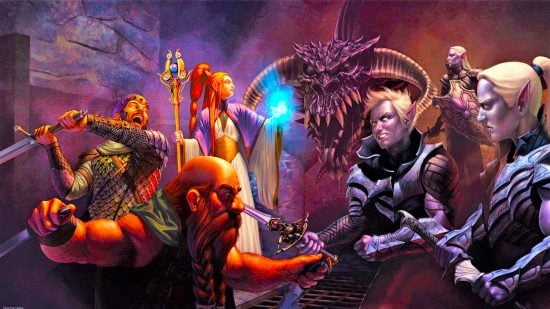
What about DnD races?
The other big decision you’ll need to make is what DnD race your character belongs to. DnD races (also known as species) decide your character’s ancestry, as well as some unique abilities they picked up from their particular community.
Fifth edition allows you to customize the ability score increases you get from choosing a particular race, so you can be pretty flexible with your race-class combo. But everything else about your particular race is set in stone, and certain races still pair better with certain classes.
If you’ve got a real hankering to play a DnD Harengon, you might pick a class based on how well it complements your dream bunny build. Or perhaps you’d like to play a class you wouldn’t usually expect to suit a DnD Dragonborn. Our in-depth DnD guides include many of our favorite class-race combos, so keep an eye out for those.
With that out of the way, let’s look at what each of the Dungeons and Dragons classes does:

Barbarian 5e
Full of muscle, rage, and hit points.
| Party role | Damage dealer, Tank |
| Primary ability | Strength |
| Saving throws | Strength, Constitution |
| Hit dice | 1d12 per Level |
| HP at 1st level | 12 + Constitution modifier |
| Best races | Dwarf, Half-Orc, Goliath |
The embodiment of anger management issues, the Barbarian 5e class is filled with the classic muscle-bound, hot-headed warriors we all know and love. Based on figures like Conan or Boudica, they are heavy hitters who excel in battle.
With their rage ability and higher-level subclass features, Barbarians have the potential to deal devastating damage in combat and are near-impossible to take down because, of all the DnD classes, they have the highest hit dice (which determine your health).
As this is a simple class that usually focuses on using brawn instead of brains, players will want to prioritize raising their Strength, Constitution, and Dexterity scores for an effective battle-ready Barbarian build.
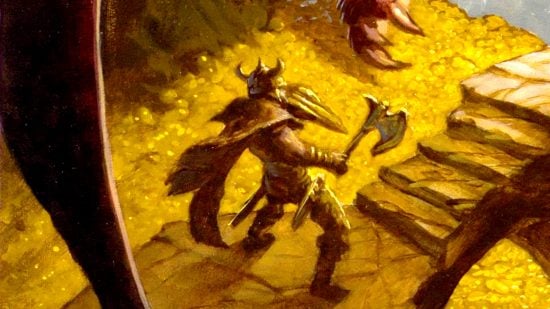
Barbarian strengths
High hit dice and plenty of Rage mean the Barbarian is one tough cookie in combat. It’s a very satisfying experience to dominate the battlefield (even if your method of dealing damage can get a little same-y).
While every class has its own intricacies, the Barbarian isn’t too complicated to build. This means it could be a great choice for a new D&D player who still wants to feel like a powerful party member.
Barbarian weaknesses
Everyone has an Achilles’ heel, and the Barbarian has a few distinct weak spots. They’re only really built for melee, meaning ranged foes will be particularly problematic.
Barbarians also tend to dump their mental and social stats (Wisdom, Intelligence, Charisma). Low Charisma and a lack of useful skills mean they won’t be helpful in social roleplaying situations, and they may feel a bit useless in campaigns with less focus on combat.
A lack of Wisdom is the real killer, though. A lot of enemy attacks may call for a Wisdom saving throw, leaving your Barbarian vulnerable.
Ready to start building your own skull-crushing, body-building badass? Read our full-on Barbarian 5e class guide for more information on subclasses and builds. Or, if you’d like to find out which Barbarian paths we think are best, we’ve got a ranked Barbarian subclasses 5e guide that can help.
Bard 5e
A charismatic class that can fill nearly any role.
| Party role | Utility, Support, Control |
| Primary ability | Charisma |
| Saving throws | Charisma, Dexterity |
| Hit dice | 1d8 per Level |
| HP at 1st level | 8 + Constitution modifier |
| Best races | Halfling, Half-Elf, Kenku |
If you want to hone your roleplaying skills, the confident and charming Bard 5e class is a great choice. Often referred to as the ‘jack of all trades’ of the adventuring party, the Bard is a versatile class that can be a huge benefit to teammates, both in battle and in social interactions.
A relatively tricky class to optimize, choosing the Bard’s spells requires strategic thinking and foresight. As they are primary spellcasters who truly shine in social situations, focus on raising their Charisma score as you progress.
Bard strengths
The Bard is one of the more flexible classes Dungeons and Dragons offers. They’re masters of many different skills and spells, which means they’ve heaps of utility in and outside of combat.
The Bard can be tweaked to fit whatever role your party is missing, and they can have their fingers dipped in many pies at once. Want to be the party Face but still feel powerful in combat? That’s the Bard, baby.
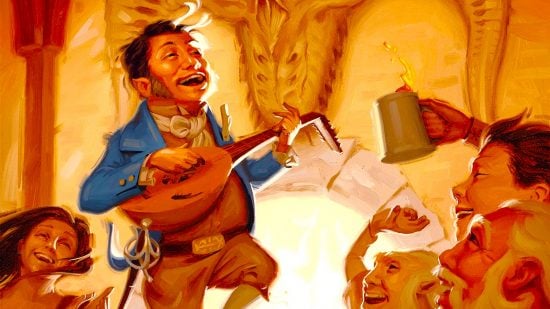
Bard weaknesses
Of course, the Bard can’t do everything. The main thing they’ll never let you do is master combat, as the class is majorly lacking when it comes to damage spells.
Plus, as we already mentioned, the Bard isn’t the easiest class to optimize. It’s easy to become paralyzed by the number of options available. It’s also easy to get stuck spamming Vicious Mockery in combat when you’re trying to save your spell slots.
While your character may be carefree and marching to the beat of their own drum, the Bard player will need to plan carefully.
Thinking of taking up your lute / violin / bagpipes and setting out on a musical tour of the Forgotten Realms? Play out your options with our in-depth Bard 5e class guide, and find your creative flair with our ranked list of DnD Bard subclasses.
Cleric 5e
Holy hell, that’s a lot of cool subclasses.
| Party role | Support, Healer, Damage dealer |
| Primary ability | Wisdom |
| Saving throws | Wisdom, Charisma |
| Hit dice | 1d8 per Level |
| HP at 1st level | 8 + Constitution modifier |
| Best races | Human, Dwarf, Aasimar |
The Cleric 5e class is the divine agent of a god, and they act as your tanky healer, smiting evil while keeping their party alive. However, Clerics can follow vastly different archetypes and playstyles based on which DnD god and divine domain they choose.
The Player’s Handbook details seven divine domains that will dictate your party role; for example, if you are focused on healing, a Life Cleric is a great choice, whereas combat-orientated Clerics will benefit from the War domain.
Since Clerics are primary spellcasters with a Wisdom focus, and the party’s healer too, invest in their Wisdom and Constitution scores as you gain a DnD level up. With their simple spellcasting mechanic and baked-in roleplaying options, they are a great pick for first-time players.
Cleric strengths
Clerics have a huge range of subclasses to choose from, and these options mean they can excel in most party roles. Each divine domain comes with its own form of Channel Divinity, an awesome Cleric ability which does far more than just scare off the undead.
While they’re known for their incredible healing skills, it’s just as viable to create an offensive build and deal some impressive levels of damage. Plus, as Wisdom spellcasters, Clerics have a better chance of staying stable when it comes to the game’s favorite saving throws.
Cleric weaknesses
A lot of D&D players hear the word ‘healer’ whenever a Cleric is mentioned. This means that, regardless of your DnD character build, other players may expect you to focus on healing their combat-happy characters. It’s an issue that can be solved with clear communication, but it’s worth knowing before you sign yourself up for some holy smiting.
Fancy yourself a devoted warrior of faith? Choose your pious path and DnD Cleric spells with our complete, in-depth Cleric 5e class guide. We can also tell you more about individual DnD Cleric subclasses in our ranked guide, as well as these detailed individual guides:
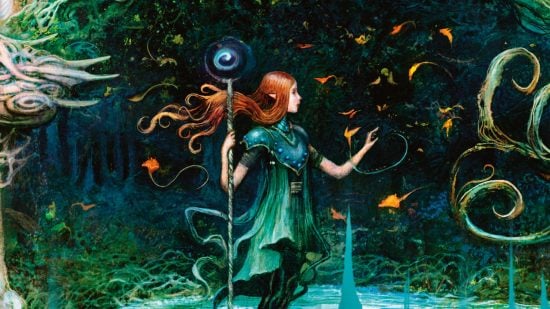
Druid 5e
The class that makes you one with nature.
| Party role | Utility, Support, Healer, Control |
| Primary ability | Wisdom |
| Saving throws | Intelligence, Wisdom |
| Hit dice | 1d8 per Level |
| HP at 1st level | 8 + Constitution modifier |
| Best races | Dwarf, Tortle, Shifter |
Ever wanted to be one with nature or transform into any creature? If the answer is yes, then the Druid 5e class is for you. Druids are fairly flexible, able to polymorph into beasts, heal the party, and control the elements to turn a battle in your favor.
With quirky 5e spells and an aversion to metal, roleplaying as an eccentric Druid can be fun for players who love mysticism and folklore. As a primary spellcaster, you should focus on raising your Druid’s Wisdom score first and foremost.
Druid strengths
Druids are Wisdom-based spellcasters, which feel fantastic to play. You’re hardy in the face of the game’s most common saving throw, and you’re naturally adept with out-of-combat skills like Perception, Insight, and Survival.
And that’s not the only reason the Druid makes a great all-rounder. The Druid has an excellent selection of spells and cantrips (shout out to Shillelagh), and you can prepare any Druid spell of the appropriate level, switching your options out on a long rest 5e.
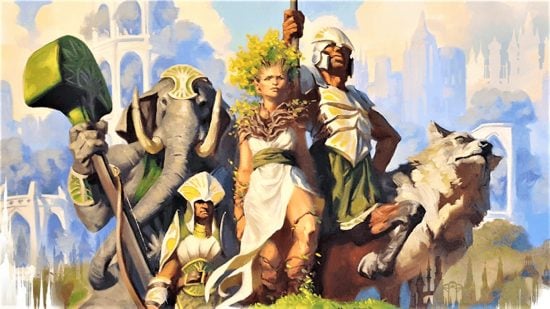
Combine this with the Druid’s strong and varied subclasses, and you’ve a highly versatile and replayable DnD class. Whether you want to be a frontline fighter or a supportive healer, the Druid has options for you.
We haven’t even talked about Wild Shape 5e yet. Depending on how you play your Druid, this can be a huge boon in or out of combat. And there’s endless amounts of fun to be had roleplaying in your animal form.
Druid weaknesses
The Druid’s low armor class and health make it one of the squishier classes to play. DMs can be very particular about that ‘no metal’ rule when it comes to armor too, so you’re particularly vulnerable.
Plus, while the Druid can access some truly awesome spells, many of them rely on concentration 5e. This puts a limit on the cool Druid shenanigans you can get going.
If you’re set on becoming one with nature, plant yourself in the most fertile soil possible with our comprehensive D&D Druid 5e class guide, plus our ranked DnD Druid subclasses guide.
Fighter 5e
A simple yet very effective martial class.
| Party role | Tank, Damage dealer |
| Primary ability | Strength or Dexterity |
| Saving throws | Strength, Constitution |
| Hit dice | 1d10 per Level |
| HP at 1st level | 10 + Constitution modifier |
| Best races | Dwarf, Elf, Dragonborn, Half-Orc |
The classic action hero archetype, the Fighter 5e is a specialized battle machine and an excellent pick for players who love to deal damage in combat. Like the Barbarian, focus on Strength/Dexterity and Constitution to make your Fighter a devastating force in combat.
Great for new players and an ideal base class to experiment with DnD multiclassing, the Fighter offers a range of roleplaying possibilities. Simple doesn’t have to mean boring though – a range of excellent subclasses and access to more feats than other classes can stop the Fighter feeling stale.
Fighter strengths
As we mentioned, Fighters are great options for new players who are still learning the ropes of D&D. The Champion is one of the simplest subclasses in the game, which may appeal to newbies still building their confidence.
That’s not to say things can’t get more advanced – as we already said, there’s a whole range of viable Fighter subclasses and character builds which add complexity. Fighters also have more ability score increases to play with, meaning you can shake things up even further by experimenting with 5e feats.
Fighters are entirely designed around combat, which means they feel great to play during battle. They get more attacks than anyone else, and they deal ridiculous levels of damage to single targets. Combine that with a sturdy armor class and plenty of HP, and you’re one hell of a powerhouse.
Fighter weaknesses
The Fighter’s greatest strength also leads to its greatest pitfall. While you’re a beast in battle, you’re not great at much else. Playing a Fighter in a campaign focused on investigation or social intrigue may leave you twiddling your heavily-armored thumbs.
Like other martial classes, Fighters are also particularly vulnerable to spell attacks that call for mental saving throws. Wisdom is not usually your strong suit.
Would you take the Fighter’s path? Begin your training with our complete D&D Fighter 5e class guide, including Fighting Styles, subclasses, races, builds, and more. We’ve also ranked the best Fighter subclasses 5e in a dedicated advice guide.
From the Eldritch Knight 5e to Battle Master 5e, from the Rune Knight 5e to the Echo Knight 5e, we’ve got you covered when it comes to Fighters. We can also tell you more about rarer, unofficial Fighters like the Gunslinger 5e.
Monk 5e
Move swiftly and master the martial arts.
| Party role | Damage dealer, Control |
| Primary ability | Wisdom & Dexterity |
| Saving throws | Dexterity, Strength (gain all saving throws at level 14) |
| Hit dice | 1d8 per Level |
| HP at 1st level | 8 + Constitution modifier |
| Best races | Elf, Halfling, Aarakocra, Tortle |
The Monk 5e class is the martial arts expert of the D&D world. Driven by discipline and the mystical force Ki, they destroy their enemies quickly and effectively.
With their speed, Monks make excellent strikers in combat, able to break through enemy lines and target spellcasters. Their abilities make them great damage dealers, but they can be challenging to play due to their low hit dice and lack of DnD armor proficiency.
The Monk class offers unique character options with tons of pop culture references for roleplaying, from ninjas to air/water/earth/fire-benders. Focus on raising your Dexterity, Wisdom, and Constitution scores as you progress.
Monk strengths
Monks may not always hit hard, but they hit often, getting multiple attacks earlier than most martial classes. Plus, when your weweapons are your hands, you’re never unarmed – something that can be useful in social scenarios or when the party gets captured.
As Monks require strong Wisdom, Dexterity, and Constitution, you’ll easily resist the common saving throws a DM throws at you. You’re also a beast on the other end of saves, sometimes forcing enemies to fend off multiple saves in a single turn. Like we said before: spellcasters beware.
Monk weaknesses
Many players consider the Monk the worst D&D class of all. We don’t believe any class is rock-bottom, but the Monk does have some drawbacks which can make it difficult to master.
The Monk’s AC and HP are nothing to write home about, and the damage they deal can feel a little puny. They get few proficiencies, and they’re heavily reliant on three stats – which is a lot to keep at optimum levels, and often rules feats out of a viable build.
Will you master the power of the Ki with your next D&D character? Our fully loaded D&D Monk 5e guide uncovers this class’s rules, subclasses, and secret ways. And our ranked DnD Monk subclasses guide can help you pick the best build for your character.
Paladin 5e
You smite mightily in the name of the gods.
| Party role | Tank, Damage dealer, Support, Healer |
| Primary ability | Strength & Charisma |
| Saving throws | Wisdom, Charisma |
| Hit dice | 1d10 per Level |
| HP at 1st level | 10 + Constitution modifier |
| Best races | Dragonborn, Half-Elf, Triton |
Often taking the leadership role and becoming the face of the party, the Paladin 5e is a charismatic hybrid class, dealing in both spellcasting and melee combat. Unlike previous editions of the game, there are no DnD alignments or religious restrictions for your Paladin in 5e, making them personality-driven and only bound to their chosen Oath. These Oaths will define your character’s play style, so pick carefully.
To create a well-rounded Paladin who can support your party and act as the negotiator/diplomat in social situations, focus on raising your Charisma and Strength scores. Then, place your faith in your chosen god, and get smiting.
Paladin strengths
The DnD Paladin excels in both striker and support mode, with strong damage and healing options in equal measure. They hit hard, they heal hard, and with chunky AC and armor proficiencies, they can tank pretty well too. Surely there’s nothing a Paladin can’t do?
Paladin weaknesses
Ranged combat – that’s one thing Paladins can’t really do. They also aren’t known for their stamina. Paladin spell slots and the majority of Paladin features all replenish on a long rest, meaning they can feel a bit feeble when facing multiple combat sessions in a single day.
Plus, Paladin players have a lot of ability scores to juggle. Strength and Charisma are the absolute bare minimum, with Constitution also playing a major role in your build. When your class can do everything, you’ve got to build carefully to avoid getting spread too thin.
Are you truly set upon taking your Oath and joining the noble champions of the righteous? Dive into our comprehensive Paladin 5e guide for more on Paladin stats, Oaths, subclasses, and more. Once you’ve got your bearings, check out our ranked DnD Paladin subclasses guide for our take on the top choices.
Ranger 5e
A dexterous class that’s perfect for scouting.
| Party role | Damage dealer, Utility, Support |
| Primary ability | Dexterity & Wisdom |
| Saving throws | Dexterity, Strength |
| Hit dice | 1d10 per Level |
| HP at 1st level | 10 + Constitution modifier |
| Best races | Elf, Halfling, Human, Harengon |
A hybrid class perfect for any players that love exploration, the Ranger 5e class is part martial warrior, part spellcaster, and can be invaluable party members. A popular choice, Rangers are the masters of nature and can take on multiple party roles. They can be both melee and ranged damage dealers with their DnD weapons, cast control spells, and provide heaps of utility for DnD campaigns with their tracking abilities.
Rangers get a ton of choices as they level up. They can select things like favored terrain and enemies, so it is always a good idea to consult with your DM when character-building. Focus on raising your Dexterity score for damage and Wisdom or Constitution for spells and skills.
Ranger strengths
If you want a character that excels at exploration, travel, and tracking, there are few better options than a Ranger. They can access some excellent spells for support and area control, and a range of strong Ranger subclasses allow you to specialize in your favorite roleplaying activities. Want to be a Stealth master or a DnD monster specialist? There are some fun and flavorful options with the Ranger.
Ranger weaknesses
The problem with most Rangers is they specialize too much. Some of the Ranger’s main features can become far too situational, and a player can easily pick up tricks they’ll never need to use in a campaign. A Ranger is part Druid, part Rogue, and part Fighter – but it can be challenging to build a character that matches any of these classes in power.
For a while, the Ranger was (and by some players still is) considered the weakest D&D class. The 5e class had to be updated in Tasha’s Cauldron of Everything to have more general strengths. Things are better now, but it does require you to fork out for another DnD book if you want the new-and-improved build.
Have you already donned your forest-green armor and nocked an arrow in preparation for the Ranger’s life? Best check out our comprehensive D&D Ranger 5e guide for all the key subclasses (like Drakewarden 5e and Gloom Stalker 5e), races, builds, and more. We’ve also ranked the best and worst character options in our Ranger subclasses 5e guide.
Rogue 5e
A cheeky thief that’s never in one place for long.
| Party role | Damage dealer, Utility |
| Primary ability | Dexterity |
| Saving throws | Dexterity, Intelligence |
| Hit dice | 1d8 per Level |
| HP at 1st level | 8+ Constitution modifier |
| Best races | Halfling, Elf, Kobold |
The Rogue 5e is an elusive class that prides itself on its ability to pick your pockets while stabbing you in the back. Awarded the most skills out of all classes, a Rogue can build themselves into an irreplaceable ‘multi-tool’ teammate, picking locks, gathering information, and deceiving their way out of disputes.
With abilities like sneak attack, they can obliterate single targets, making them satisfying to play for damage-dealing. Focus on raising your Rogue’s Dexterity score, and strategically pick your level-up options to support the playstyle you want.
Rogue strengths
The Rogue’s utility in and out of combat makes them a highly appealing class to play. Whether you want a master lockpicker, a cunning Charisma machine, or a sneaky scout, there are few roleplaying situations where a Rogue isn’t useful. That includes battle – they excel in both ranged and melee combat, and their Cunning Action gives them more agility than anyone else on the field.
Rogue weaknesses
Strategy is perhaps the biggest con of playing a Rogue – there’s somehow too much strategy and not enough. A Rogue’s sneak attack relies on allies being positioned correctly or some other form of disadvantage, meaning you need to do some careful planning to ensure your one big hit does the trick. On the other hand, the cycle of ‘hit then hide’ that Cunning Action creates can feel a little repetitive at times.
Ready to hit the backstreets and make a name for yourself? Check out our comprehensive D&D Rogue 5e class guide to dive deeper into the shadows, or our Rogue subclasses 5e guide for our expert opinion on the best Rogue builds. Whether you fancy a Swashbuckler 5e, a DnD Assassin, or an Arcane Trickster 5e, we can use our Rogue cunning to advise.
Sorcerer 5e
Your magic comes from within, and you shape it at will.
| Party role | Damage dealers, Control |
| Primary ability | Charisma |
| Saving throws | Constitution, Charisma |
| Hit dice | 1d6 per Level |
| HP at 1st level | 6 + Constitution modifier |
| Best races | Tiefling, Human, Half-Elf |
Unlike other spellcasters, a Sorcerer 5e has their magic granted through natural means; their powers come from raw ability. It’s quite a complex class, but the offering of versatile spells and DnD cantrips make Sorcerers well-equipped for most dungeon crawling and social interactions.
With their proficiency in Constitution saving throws and the ability to use sorcery points to make more spell slots, they are an enticing spellcaster class for any player. Focus on raising your Charisma score for spellcasting and remember that fire spells in D&D 5e are always a powerful choice.
Sorcerer strengths
When used well, a Sorcerer’s Metamagic abilities can transform the state of a fight in a single turn. Being able to improve the speed, success rate, reach, or duration of a spell opens up a huge number of possibilities, and the Sorcerer is a class that certainly rewards creativity.
These abilities can make Sorcerers one of the best damage-dealing spellcasters in D&D. Plus, thanks to their high Charisma score, they’ve got plenty of usefulness outside of a combat scenario.
Sorcerer weaknesses
As we said before, this is a fairly complex class that would suit only the most studious D&D newbie. You’ve got a limited spell list to work with, plus fewer spell slots than other spellcasters (particularly if you’re swapping them out to maximize your Sorcerer powers). You also choose your subclass from the get-go – every character build decision really counts with a Sorcerer, and there’s less room for error.
The other downside to note is the consistency of a Sorcerer. A truly powerful turn uses up a lot of resources, so you’ll have plenty of cantrip-heavy and less exciting turns in between to make up for your explosive actions. And, given the lack of armor and puny hit dice, a careless Sorcerer can easily get downed before they’ve had a chance to change the tide of battle.
Think you can feel the arcane blood coursing through your veins? Read our exhaustive DnD Sorcerer 5e class guide to channel your powers, and check out how we’d rank each of the DnD Sorcerer subclasses.
Warlock 5e
Eldritch Blast is a cantrip worth selling your soul for.
| Party role | Utility, Damage dealers, Control |
| Primary ability | Charisma |
| Saving throws | Wisdom, Charisma |
| Hit dice | 1d8 per Level |
| HP at 1st level | 8 + Constitution modifier |
| Best races | Tiefling, Half-Elf, Githzerai |
Spellcasters who form a pact with an otherworldly patron, the Warlock 5e are granted incredible powers, making them uniquely strong damage dealers and unlike any other spellcaster in 5e. Despite their deceptively easy spellcasting, Warlocks are a mechanically complex class. Each level-up choice is meaningful and requires strategic thinking.
Their obligation to and relationship with their patron make them a story-building goldmine. You can be a cultist working for the fiends of hell, or an agent of the fey – the possibilities are endless. They’re great for damage dealers to multiclass into, too. Focus on your Charisma score for spellcasting, and don’t forget to Eldritch Blast 5e at every opportunity.
Warlock strengths
Warlocks are well-suited to D&D players who want to try a little bit of everything. Being Charisma-based means they can easily become a passable party Face, and they’ve got so many customization options that none of your Warlock builds need to look the same. Plus, the potency of their low-level abilities means Warlocks are a prime target for multiclassing – opening up your build options even further.
Warlock weaknesses
The Warlock’s spell slots are limited, and the amount of short rests you’ll get to replenish them are somewhat at the mercy of your DM. This means that in some situations (imagine a severe survival campaign where rests are limited) playing a Warlock can be incredibly restrictive.
Ready to make your pact with forces unknown? Dive in deep with our DnD Warlock 5e guide, complete with all the Warlock races, subclasses (like the Hexblade Warlock 5e), and builds you’ll need to get started.
Wizard 5e
Wise and bookish, with a ton of builds.
| Party role | Utility, Damage dealers, Control |
| Primary ability | Intelligence |
| Saving throws | Intelligence, Wisdom |
| Hit dice | 1d6 per Level |
| HP at 1st level | 6 + Constitution modifier |
| Best races | Gnome, Human |
The Wizard 5e class and fantasy go hand in hand, and many players will no doubt gravitate towards this class. With eight DnD schools of magic to choose from and a unique spellbook mechanic, Wizards immerse players completely into the ‘studious magical genius’ role, making roleplaying a breeze. They can obliterate multiple enemies at once, but they are quite vulnerable due to their low hit dice.
Although tricky at first, once you understand the spellbook mechanic and how to use abilities like mage armor, a Wizard can be one of the party’s most effective damage dealers. Focus on your Intelligence score for spellcasting – and remember to keep your spellbook safe!
Wizard strengths
Flexibility is arguably the Wizard’s greatest strength. Thanks to their varied subclasses and the huge number of spells they can learn, a Wizard can fill almost any role in a party. They’re not the class to go for if you want to main as a healer, but the right build lets you do pretty much anything else.
Wizard weaknesses
The obvious downside of playing a Wizard is how delicate you are. Puny hit points, poor saving throws, and the worst hit dice in fifth edition all make you particularly vulnerable.
The complexity of the class may also be off-putting for some players. Managing your spellbook and spell slots requires plenty of thought, and the Wizard class is most rewarding when you’ve carefully planned for an encounter. Essentially, be prepared to do a lot of homework as a Wizard – or, if you’re not ready for that kind of commitment, maybe try another class.
You have been accepted to Wargamer’s School of Wizardry and, er, Wizardry! Report to your first class in our D&D Wizard 5e guide, explaining the key schools of magic, the best DnD Wizard spells, and more. After that, check out which DnD Wizard subclasses we’d recommend.
Artificer 5e
For crafty players who love to tinker.
| Party role | Support, Utility |
| Primary ability | Intelligence (or Strength or Dexterity) |
| Saving throws | Intelligence and Constitution |
| Hit dice | 1d8 per Artificer level |
| HP at 1st level | 8 + Constitution modifier |
| Best races | Human, Gnome, Kobold, Warforged |
The Artificer 5e is a tinkerer and a lover of tools. Using powerful magical infusions, an Artificer can create and bolster magical items and weapons that will really help your party pack a punch. The Artificer plays a big role in supporting their peers – it’s up to them to make everyone as powerful as possible.
Of course, that isn’t to say that you have to help your party out at all times. Feel free to roleplay petty grudges or selfish motivations for not passing out all the hottest new gadgets – Wisdom is a common ‘dump’ stat for this class, so you definitely don’t have to be wise all the time.
Artificer strengths
Machines and engineering rarely feature in D&D games, so the Artificer offers a unique flavor you can’t often explore with other classes. Its list of subclasses is varied, and each supports differing playstyles. Plus, thanks to your infusions, spells, and craftable items, there are heaps of customization options.
Artificer weaknesses
For some people, fine-tuning their perfect Artificer build is a big draw. But if you’re a beginner player or someone who doesn’t enjoy agonizing over small details, this might not be the class for you.
Plus, there are plenty of scenarios where the Artificer can feel a bit situational. They make great supporting characters and can use spells and 5e magic items to fill a few other combat roles in the party. But as Intelligence-based characters, they’re not going to naturally fill many out-of-combat roles.
The Artificer may also feel a bit wasted if your campaign doesn’t pay much attention to (or even allow) downtime, crafting, and magic items. So always check with your DM before going down this route.
Want to become a master of golems, explosives, and more? Check out our expertly engineered D&D Artificer 5e class guide for all the tools you need.
Blood Hunter 5e
It’s not official, but it’s officially awesome.
| Party role | Control, Damage dealers |
| Primary ability | Strength or Dexterity |
| Saving throws | Dexterity and Intelligence |
| Hit dice | 1d10 per level |
| HP at 1st level | 1d10 + Constitution modifier |
| Best races | Dwarf, Elf, Halfling |
The Blood Hunter 5e is a DnD homebrew class from the mind of Critical Role Dungeon Master Matt Mercer, but it’s proven popular enough to get its own unofficial write-up on D&D Beyond. Based in part on The Witcher, Blood Hunters sacrifice their own health – and blood- to use the power of hemocraft magic against evil.
There’s a lot of roleplay potential in Blood Hunters. They gather in secretive orders, are misunderstood by much of society, and must constantly grapple with the darkness within – as the darkness they use to fight evil may one day consume them all together. Roleplay aside, there are also plenty of ways to customize your hemocraft to deal damage to baddies in new and interesting ways.
Blood Hunter strengths
The Blood Hunter offers one of the most unique roleplaying opportunities of all. If the Gloomstalker Ranger or Assassin Rogue just wasn’t dark enough for you, here’s your chance to mix martial and magic abilities with a bit of blood.
With a careful character build, the Blood Hunter can be a powerful front-liner. And most of the subclasses make solid choices, so there’s plenty of variety for players who love to craft a character.
Blood Hunter weaknesses
The Blood Hunter class is situational in a way the mainline classes aren’t. Firstly, you need a DM who accepts homebrew classes to play one at all.
And secondly, you’ll likely need to run your chosen class past the players too – the class relies on blood, gore, and self-harm, so it’s good practice to make sure everyone around the table is comfortable with you roleplaying these topics. If they’re not, maybe you’re better off choosing a regular Ranger or Fighter.
As this is a homebrew class, you should also expect the balance to be a bit off compared to the core classes. The Blood Hunter can feel great when optimized properly, but they might not always feel as powerful as the party Wizard and Warlock.
Looking to join a Blood Hunter order? First, you’ll need to undergo the Hunter’s Bane ritual – then you should check out our D&D Blood Hunter 5e guide for everything you need to create a character.
You might have the perfect DnD class in mind now, but have you got a game to play them in? We can recommend our favorite DnD one shots to test your build in. Or, you can learn all about the next generation of DnD classes in our guide to One DnD.
